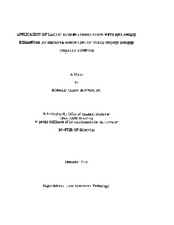| dc.description.abstract | The shelf life of fresh shrimp stored on ice is limited by two factors: melanosis (blackspot) and microbial spoilage. In this study L-lactic acid was tested, alone and in combination with sodium bisulfite and 4-hexylresorcinol, to determine their effectiveness as both melanosis and microbial spoilage inhibitors. Brown shrimp (Penaeus aztecus) were obtained from the Gulf of Mexico on board a commercial fishing vessel. Immediately after harvest, the shrimp were separated from the rest of the catch. The shrimp were then headed, washed, and sorted into six groups that were treated by dipping for I min in the following solutions: (1) Control (sea water), (2) 1.0% L-lactic acid, (3) 1.25% sodium bisulfite, (4) 0.0025% 4-hexylresorcinol, (5) 1.25% sodium bisulfite with 1.0% L-lactic acid, or (6) 0.0025% 4- hexylresorcinol with 1.0% L-lactic acid. Each of the six groups of shrimp was split into 2 subgroups. One subgroup of shrimp was treated immediately after sorting and the other subgroup was treated after a 2-hr delay on deck at ambient temperature to simulate normal practices during peak harvesting times. Each subgroup of shrimp was placed in a nylon mesh bag, completely submerged in the appropriate dip solution for 1 min with moderate up and down agitation, and drained. Each treatment group was stored on ice for 16 days in separate ice chests, and examined over the storage period for aerobic plate count (APC), pH, and degree of melanosis. Overall, this study demonstrated that treatment with L-lactic acid, alone or in combination with 4-hexylresorcinol, had no detectable effect on the microbiological shelf life of brown shrimp (Penaeus aztecus). In addition, 4-hexylresorcinol performed exceptionally well as a melanosis inhibitor, whether alone or in combination with L-lactic acid. However, extensive bacterial growth was demonstrated in the 4-hexylresorcinol dip solution during normal storage on deck, creating the potential for a heavy bacterial inoculation of shrimp during a typical dipping process. Addition of L-lactic acid to the 4-hexylresorcinol dip solution prevented bacterial growth in the dip solution and did not interfere with melanosis inhibition. | en |


